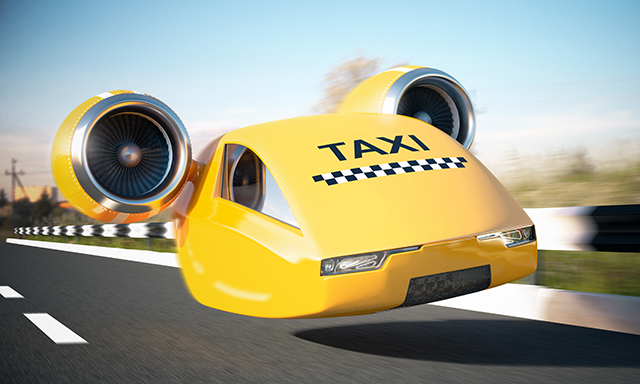
The Pentagon is hedging its bets in the race to build the world's first driver-less air taxi. It is funding two start-ups that are quite close to realizing a working commercial vehicle in the near future, an article in The Guardian reported.
Kitty Hawk and Joby Aviation are being funded by the Defense Innovation Unit Experimental (DIUx). A government entity that looks into useful emerging technologies for the U.S. military, the DIUx has earlier provided almost $2 million to those companies in 2017.
The U.S. military is interested in small electric aircraft. It believes personal aerial vehicles – like the Cora flying air taxi developed by Kitty Hawk – can be useful to military personnel.
"These vehicles will… offer a niche capability for specific tactical applications with a low acoustic signature, near instantaneous start/stop, ability to spread an assault force across multiple vehicles, and automated systems," explained the documentation for the funding program.
Both start-ups and big aerospace companies are working on electric vertical take-off and landing (e-VTOL). Kitty Hawk and Joby, however, are holding their own against established names like Airbus, Boeing, and Uber. (Related: The latest prototypes of flying cars do not require a pilot or piloting skills.)
Kitty Hawk renamed its air taxi from "Mule" to "Cora"
The Federal Aviation Administration (FAA) has given both Kitty Hawk and Joby experimental airworthiness certificates. The competing prototypes are being tested in different areas.
Kitty Hawk's self-flying taxi started out as the Mule Self-Piloting Aircraft. Now named Cora, it features two modes of flight: A conventional method using a traditional bladed propeller and wings, as well as a VTOL mode that uses a dozen vertical rotors.
Cora can reach a speed of 150 miles per hour (214 kilometers per hour). It seats two people and has a maximum carrying capacity of 400 pounds. Its short battery life – 19 minutes – limits its range to less than 50 miles, but it has 10 minutes of back-up power.
The FAA-issued permit allows fly Cora over lightly populated areas. For safety reasons, the self-flying taxi is not allowed to fly higher than 200 feet (60 meters), although it can reach altitudes of 10,000 ft (3,048 m). It is controlled from the ground.
Cora is currently being tested in New Zealand. Kitty Hawk will set up a commercial taxi service in that country.
Furthermore, the start-up has created Ground Ops LLC. This subsidiary company is part of a federal pilot program to integrate autonomous aircraft and drones into commercial airspace.
S4 aims to carry more people over greater distances
The S4 prototype developed by Joby Aviation has a less exciting name but more ambitious goals. It is expected to carry four passengers to destinations that are 150 miles away on a single charge.
This self-flying aircraft employs six tilting rotors of an innovative design. Its FAA certificate did not set a top speed, but it is apparently faster than the chase helicopter that the company is currently using to keep track of it during flights.
Both Cora and S4 are able to detect and avoid other flying objects. If their remote control systems suffer malfunctions, they are programmed to return home at once. The S4 also features a large parachute that can safely land the aircraft in case it suffers a serious mechanical problem.
While the S4 usually operates out of the personal ranch of Joby's CEO, it is also occasionally based at Fort Hunter Liggett. Its FAA paperwork notes that Joby signed a contract with the U.S. Department of Defense to test their flying taxi in military airspace.
Neither self-flying taxi designs will be militarized in the near future. The FAA airworthiness certificates specifically state that both unmanned aircraft are not allowed to carry weapons.
To get better informed about self-flying vehicles, visit FlyingCars.news.
Sources include:
Please contact us for more information.
















